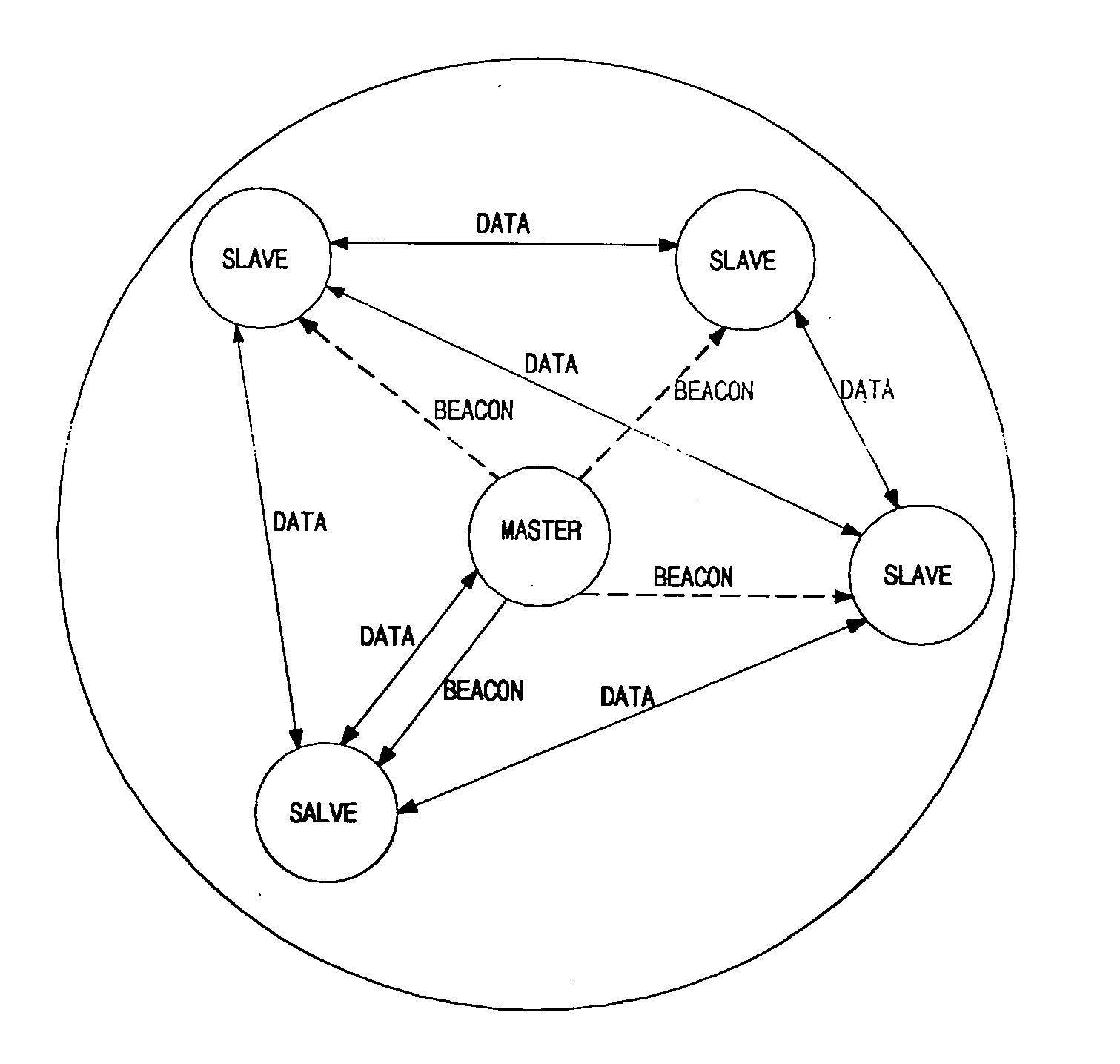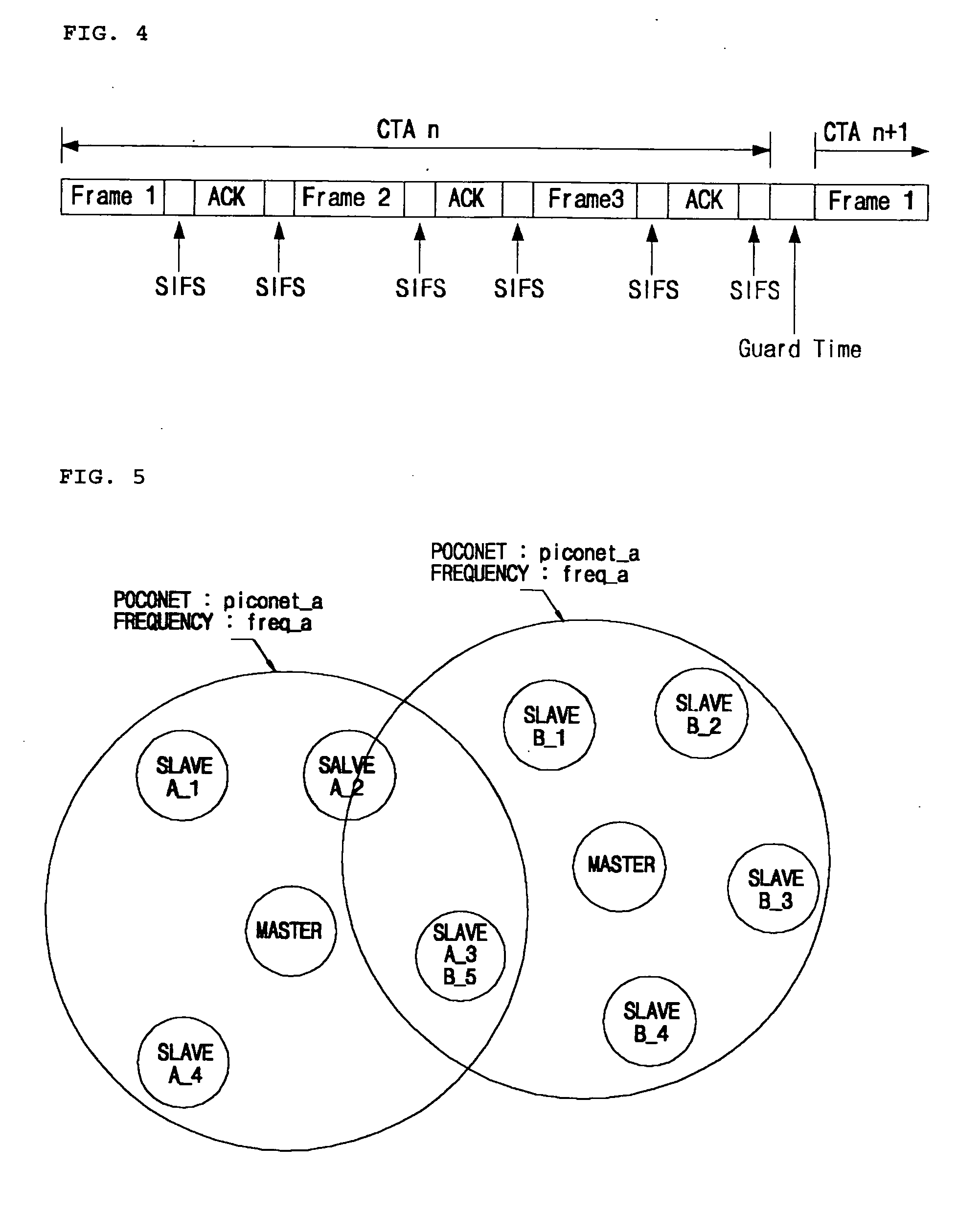Method of implementing scatternet in wireless personal area network
a wireless personal area network and wireless technology, applied in the field of wireless personal area network implementation, can solve the problems of insufficient provisioning of scatternet communication procedure between piconets using different frequencies, inability to guarantee bandwidth, etc., and achieve the effect of efficient scatternet communication
- Summary
- Abstract
- Description
- Claims
- Application Information
AI Technical Summary
Benefits of technology
Problems solved by technology
Method used
Image
Examples
Embodiment Construction
[0047] Hereinafter, embodiments of the present invention will be described in detail with reference to the attached drawings.
[0048]FIG. 9 is a flowchart schematically showing a message flow for implementing a scatternet according to a first embodiment of the present invention. In FIG. 9, it is assumed that the master of a piconet A (master 1) recognizes a piconet to which a desired station to be found belongs, through a remote scan. The remote scan is defined in the IEEE 802.15.3 standard.
[0049] First, the master 1 transmits a scatternet request frame to a slave belonging both to piconet A and piconet B at step S100. The slave, having received the scatternet request frame, relays the scatternet request frame to the master of piconet B (master 2) at step S110. The scatternet request frame may include information, such as the start time and period of a superframe, a usage frequency, etc.
[0050] The master 2, having received the scatternet request frame, transmits a scatternet respon...
PUM
 Login to View More
Login to View More Abstract
Description
Claims
Application Information
 Login to View More
Login to View More - R&D
- Intellectual Property
- Life Sciences
- Materials
- Tech Scout
- Unparalleled Data Quality
- Higher Quality Content
- 60% Fewer Hallucinations
Browse by: Latest US Patents, China's latest patents, Technical Efficacy Thesaurus, Application Domain, Technology Topic, Popular Technical Reports.
© 2025 PatSnap. All rights reserved.Legal|Privacy policy|Modern Slavery Act Transparency Statement|Sitemap|About US| Contact US: help@patsnap.com



